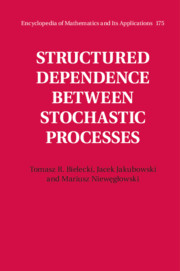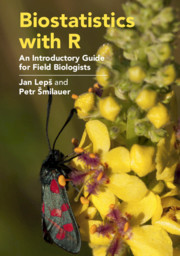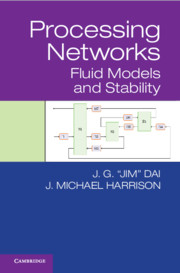Refine search
Actions for selected content:
52383 results in Statistics and Probability
Finding tight Hamilton cycles in random hypergraphs faster
- Part of
-
- Journal:
- Combinatorics, Probability and Computing / Volume 30 / Issue 2 / March 2021
- Published online by Cambridge University Press:
- 23 September 2020, pp. 239-257
-
- Article
- Export citation
A model of COVID-19 transmission to understand the effectiveness of the containment measures: application to data from France
-
- Journal:
- Epidemiology & Infection / Volume 148 / 2020
- Published online by Cambridge University Press:
- 22 September 2020, e221
-
- Article
-
- You have access
- Open access
- HTML
- Export citation
The COVID-19 pandemic: the public health reality
-
- Journal:
- Epidemiology & Infection / Volume 148 / 2020
- Published online by Cambridge University Press:
- 22 September 2020, e223
-
- Article
-
- You have access
- Open access
- HTML
- Export citation
FACTORISABLE MULTITASK QUANTILE REGRESSION
-
- Journal:
- Econometric Theory / Volume 37 / Issue 4 / August 2021
- Published online by Cambridge University Press:
- 22 September 2020, pp. 794-816
-
- Article
- Export citation
Can elevated concentrations of ALT and AST predict the risk of ‘recurrence’ of COVID-19?
-
- Journal:
- Epidemiology & Infection / Volume 148 / 2020
- Published online by Cambridge University Press:
- 21 September 2020, e218
-
- Article
-
- You have access
- Open access
- HTML
- Export citation
Predictions of coronavirus COVID-19 distinct cases in Pakistan through an artificial neural network
-
- Journal:
- Epidemiology & Infection / Volume 148 / 2020
- Published online by Cambridge University Press:
- 21 September 2020, e222
-
- Article
-
- You have access
- Open access
- HTML
- Export citation
Protecting healthcare workers from SARS-CoV-2 and other infections
-
- Journal:
- Epidemiology & Infection / Volume 148 / 2020
- Published online by Cambridge University Press:
- 21 September 2020, e217
-
- Article
-
- You have access
- Open access
- HTML
- Export citation
Public attitude towards quarantine during the COVID-19 outbreak
-
- Journal:
- Epidemiology & Infection / Volume 148 / 2020
- Published online by Cambridge University Press:
- 21 September 2020, e220
-
- Article
-
- You have access
- Open access
- HTML
- Export citation
ROBUST TESTS FOR WHITE NOISE AND CROSS-CORRELATION
-
- Journal:
- Econometric Theory / Volume 38 / Issue 5 / October 2022
- Published online by Cambridge University Press:
- 21 September 2020, pp. 913-941
-
- Article
- Export citation
Practicality of Tricone Bit Wear Condition Assessment
-
- Journal:
- Experimental Results / Volume 1 / 2020
- Published online by Cambridge University Press:
- 21 September 2020, e35
-
- Article
-
- You have access
- Open access
- HTML
- Export citation

Structured Dependence between Stochastic Processes
-
- Published online:
- 18 September 2020
- Print publication:
- 27 August 2020

Biostatistics with R
- An Introductory Guide for Field Biologists
-
- Published online:
- 18 September 2020
- Print publication:
- 30 July 2020
-
- Textbook
- Export citation
Safety considerations during return to work in the context of stable COVID-19 epidemic control: an analysis of health screening results of all returned staff from a hospital
-
- Journal:
- Epidemiology & Infection / Volume 148 / 2020
- Published online by Cambridge University Press:
- 18 September 2020, e214
-
- Article
-
- You have access
- Open access
- HTML
- Export citation
A comparative study of the cooling-rate effect on rock strength reduction after microwave irradiation
-
- Journal:
- Experimental Results / Volume 1 / 2020
- Published online by Cambridge University Press:
- 18 September 2020, e36
-
- Article
-
- You have access
- Open access
- HTML
- Export citation
Response of macrobenthic communities to changes in water quality in a subtropical, microtidal estuary (Oso Bay, Texas)
-
- Journal:
- Experimental Results / Volume 1 / 2020
- Published online by Cambridge University Press:
- 18 September 2020, e34
-
- Article
-
- You have access
- Open access
- HTML
- Export citation
Evidence of Psychological Targeting but not Psychological Tailoring in Political Persuasion Around Brexit
-
- Journal:
- Experimental Results / Volume 1 / 2020
- Published online by Cambridge University Press:
- 18 September 2020, e38
-
- Article
-
- You have access
- Open access
- HTML
- Export citation
XPS and Electron Microscopy Study of Oxide-Scale Evolution on Ignition Resistant Mg-3Ca Alloy at Low and High Heating Rates
-
- Journal:
- Experimental Results / Volume 1 / 2020
- Published online by Cambridge University Press:
- 18 September 2020, e37
-
- Article
-
- You have access
- Open access
- HTML
- Export citation

Processing Networks
- Fluid Models and Stability
-
- Published online:
- 17 September 2020
- Print publication:
- 15 October 2020
ASYMPTOTIC EXPANSION FOR THE TRANSITION DENSITIES OF STOCHASTIC DIFFERENTIAL EQUATIONS DRIVEN BY THE GAMMA PROCESSES
-
- Journal:
- Probability in the Engineering and Informational Sciences / Volume 36 / Issue 2 / April 2022
- Published online by Cambridge University Press:
- 17 September 2020, pp. 401-432
-
- Article
- Export citation
Epidemiological profile and transmission dynamics of COVID-19 in the Philippines
-
- Journal:
- Epidemiology & Infection / Volume 148 / 2020
- Published online by Cambridge University Press:
- 15 September 2020, e204
-
- Article
-
- You have access
- Open access
- HTML
- Export citation





